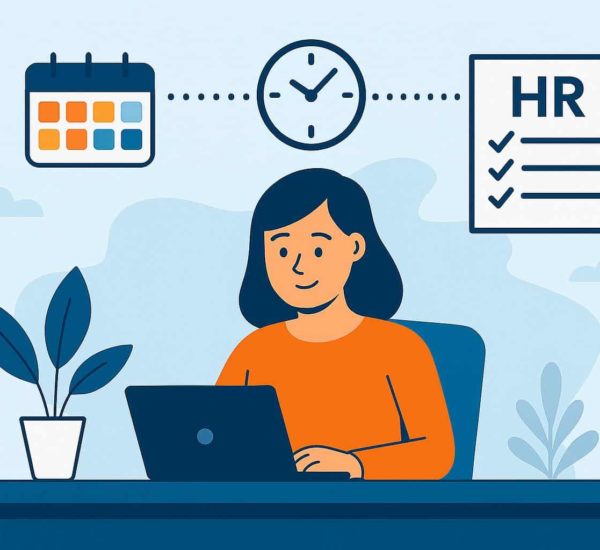We all want to feel safe at work, and there are a lot of steps employers can take to make sure their employees are protected. But why does it matter?
Well, first of all—it’s the law. The Occupational Safety and Health Act (OSHA) requires employers to protect their employees from safety hazards and illnesses. This means that employers are required by law to provide their employees with safe working conditions, including making sure they have access to appropriate safety equipment.
But beyond that, it’s just good business sense. As an employer, you want your workers to be able to do their jobs well and feel comfortable at work. If they don’t feel safe or happy at work because they don’t know what kind of precautions are being taken to keep them safe, then they can even quit. And if you lose good employees because they’re worried about their safety on the job… well… let’s just say that probably isn’t going to do much for your bottom line either!
Here are 13 workplace safety tips for the security of employees:
IT Security Software
IT security software is a type of software that helps protect your company’s information technology (IT) infrastructure. It monitors and blocks unauthorized access to systems and data, preventing malware from infecting your network or stealing sensitive information.
If you’re looking for IT security software, make sure it offers the following features:
- Real-time protection: This protects your system against viruses and other threats in real-time as they happen, rather than relying on signatures or fixed rules to detect them after the fact.
- Web Filtering: Web filtering lets you block certain websites from being accessed by employees on company computers, such as pornography sites or what the system considers dangerous pages. It can also prevent employees from visiting social networking sites like Facebook during work hours.
Restrict Access to Sensitive Information
To protect your company’s sensitive information and keep your employees safe, you should take steps to limit access to sensitive information.
For example, firewalls, encryption, and passwords protect data from unauthorized users.
- Firewalls guard against hackers gaining access to a network or system by blocking out unwanted traffic.
- Encryption scrambles data before it’s sent over the web, so authorized parties can only read it with the correct decryption key.
- Passwords are another form of access control — they help ensure that only those with an account can gain entry into a system that contains sensitive data.
Encourage your employees to practice good security habits by having them change their passwords regularly (at least once every three months), using different passwords for each system they log into, and not sharing their passwords with others outside of IT support staff members who manage accounts for authorized users at your company.
Other best practices include installing firewalls on all computers connected directly or indirectly through virtual private networks (VPNs) — primarily if employees work remotely from home offices without supervision from an IT manager overseeing day-to-day operations.
Educate Employees about Security Threats
Employees should be aware of the most common ways their personal information is compromised to create a secure workplace. This includes phishing scams, malicious websites and links, malware, ransomware, and identity theft.
Employees should learn how to report suspicious activity in the workplace or online so that your company can take action to protect them from these types of attacks.
One way to ensure that employees aren’t falling for phishing scams is by sending them surprise test emails every so often. If they click on a suspicious link within that test email, they are notified about the risk and in certain high-security roles, failing this test too often can be grounds for dismissal.

Use a Password Sharing Encrypted Tool
One way to improve employee security at the workplace is to use a password-sharing encrypted tool. It allows you to share passwords with your employees without having to worry about security.
This is because all of your passwords are encrypted and stored in the cloud, so you don’t have to worry about hackers or anyone else gaining access to them.
Background and Reference Checks
- Background checks are an essential part of employee security.
- They can help you determine if an employee has a criminal record, which could lead to the workplace being a target for theft or other crimes committed by the employee.
- They can also help you determine if an employee has a history of substance abuse, which could lead to that person becoming intoxicated and putting others at risk.
- They can also help you determine if an employee has a history of mental illness or instability, making them more likely to become violent in the workplace.
Password Policies
- Password policies should be in place. Employees should have a password they can remember and should be at least eight characters long. A good password has at least one number, letter, and unique character (such as an exclamation point or dollar sign)
- Passwords should be changed every 90 days. This ensures that no one gets too comfortable with their password by using it for years on end. It also stops employees from using easy-to-guess passwords that hackers could easily access through social media or other online accounts associated with them—and then use those same passwords to access corporate networks and other sensitive systems within your organization
- Using a random password generator to generate a strong password
- Making sure that you aren’t sharing passwords on unsafe networks
Fire Safety Precautions and Equipment
For the protection of employees:
- Employers should have fire extinguishers accessible throughout the workplace.
- Employers should ensure that their employees are well-trained in using their fire extinguishers.
- Employers should ensure that each employee knows where the nearest available fire extinguisher is located and what it looks like so they can find it quickly during an emergency.
- All workplaces should have a comprehensive fire safety plan, including emergency instructions for handling fires, evacuations, and first aid procedures for injuries sustained from smoke inhalation or burns caused by hot surfaces such as ovens or stoves.
Keypad Entry Systems
Keypad door entry systems are a great way to restrict access to a building. They’re easy to use and can be used with other security features, such as CCTV cameras and motion sensors. The keypad system lets you control who enters each room or area of the building. You can also program it to let people in only at certain times on specific days so that unauthorized individuals cannot enter during off hours.
Keypad entry systems even allow you to restrict access based on employee ID number or other criteria like location (elevator/stairs), floor number, or even day of the week!
Security Cameras and Alarms
Security cameras are a great way to identify potential threats before they become an issue. They can help you keep track of traffic flow and monitor employee activity, which may be particularly important if you have specific rules or regulations. If you have multiple floors, installing security cameras up the stairwells might also be beneficial so that employees can see what’s happening around them when they’re out of the office.
It’s also essential to consider how your company interacts with customers outside of work hours: Do your customers come into the building after hours? If so, consider installing some form of alarm at all entrances and exits (doors) so that no one who isn’t supposed to be there can get inside without setting off an alarm.
Offer Workplace Security for Remote Workers
Employees who work remotely, in particular, may feel more vulnerable to security risks because they are not in the exact physical location of their coworkers. This can make monitoring and protecting them challenging, leading to increased stress and anxiety.
Employees who work from home or remotely are just as vulnerable to digital attacks as those who work in person, but certain things may make them even more susceptible. You can help protect these individuals by ensuring they have access to secure and reliable company resources, such as VPNs (virtual private networks) and other tools to help keep workers safe.
Ensure that your employees can safely log in and out of their work without worrying about digital security issues.
The first step is ensuring they have reliable access to all necessary company resources, including software and hardware. Whether it’s a password manager or another software solution, ensure that your employees have what they need so they don’t have issues accessing sensitive information when required.
Offer Unique Wi-Fi to Visitors
While it may seem like a good idea to have visitors use the same wi-fi as your employees, offering them a separate network is better. If there are any security concerns, you can keep them isolated from the rest of your office.
Additionally, if you’re worried about someone accessing sensitive information (or another employee’s computer), setting up an access point that requires authentication before logging in may be worthwhile. You can do this by adding an extra layer of security to the login process on your router or even having it require passwords as part of its initial configuration.
Employee Supervision Policies
Employees should be supervised at all times. This can include being present in the work area or having a supervisor check in with an employee during breaks, lunches, and after work hours.
Employees may not realize that they are at risk of identity theft by using their personal computer to check sensitive information or accessing it from their smartphones while at home.
Employee Break Policy Enforcement
You can ensure your employees are taking their breaks by enforcing a policy that has been clearly communicated to all staff, and addressing those who don’t follow it. If an employee does not take a break, you should first address it as an issue of workplace safety.
For example, if an employee works through lunch because they’re under too much pressure to stop working for even 10 minutes, this can lead to health problems—such as heart disease or obesity.
In addition to being good practice in terms of health insurance costs and employee wellness, taking regular breaks during work hours also leads to better productivity. A Forbes study found that taking breaks at work increase productivity and mental well-being and freshens your employees’ mind.
Gun Violence Safety Measures
One way to improve employee security at the workplace is to place gun violence safety measures by increasing the security and taking steps to protect employees, such as installing cameras and having a security guard on duty. Another way is to educate employees about what they can do in case of an emergency, such as evacuation plans.
The second step is installing panic buttons and emergency call boxes throughout the building so employees can quickly alert security if they feel threatened by an intruder.
Another way is to have a clear protocol for reporting suspicious activity so that if someone sees something suspicious, they know how to report it without overreacting or causing harm.
You should also take steps to increase awareness about gun violence and its risks for employees by training them on how to recognize warning signs before it happens so they can contact authorities immediately if they feel unsafe or threatened by anyone who might be carrying a weapon
Ready to Make Your Workplace Secure?
Providing a practical and secure workplace is the responsibility of employers throughout all industries. For those in managerial positions, the stakes are exceptionally high: you must ensure compliance and safeguard sensitive data while fostering a positive, productive work environment. We’ve compiled 13 concrete tips to help you accomplish these goals, but first, it’s essential to understand what you’re protecting, who is at risk, and why they are vulnerable.





